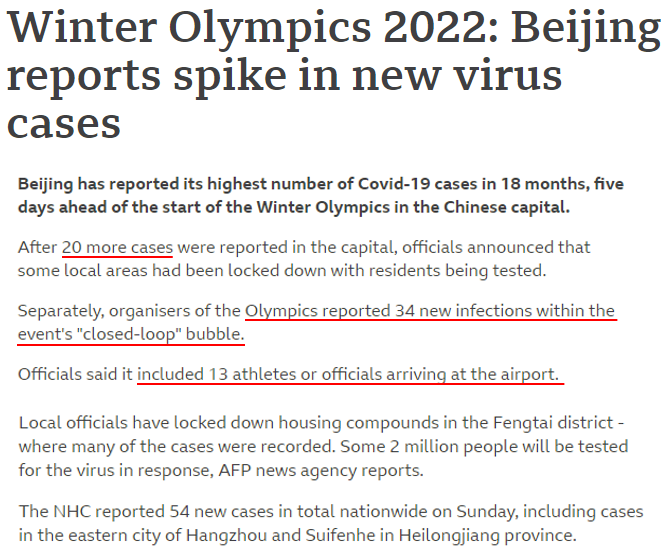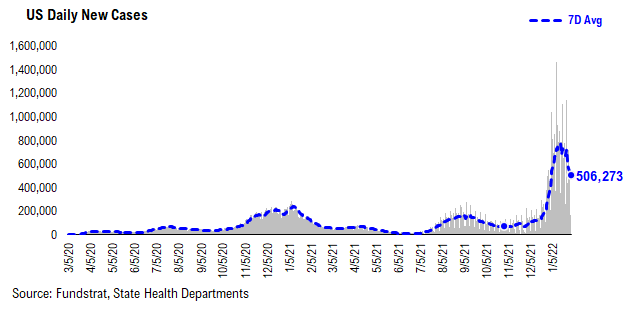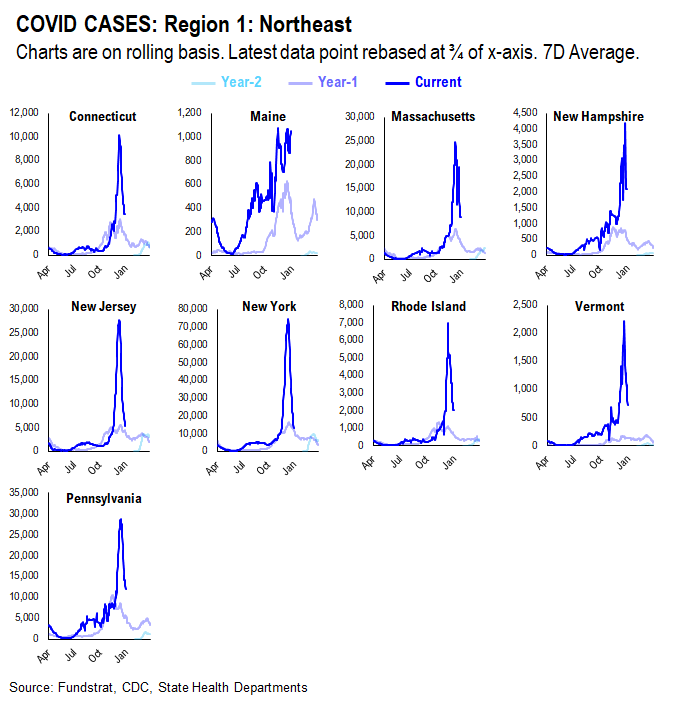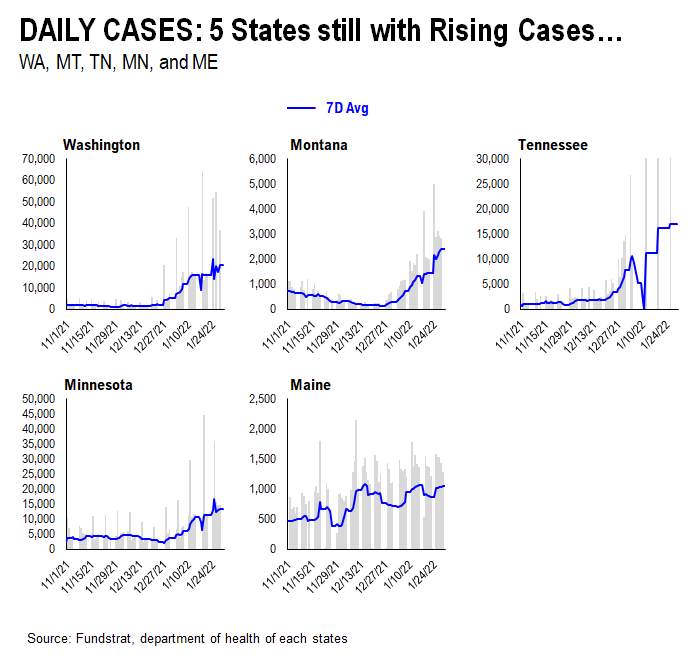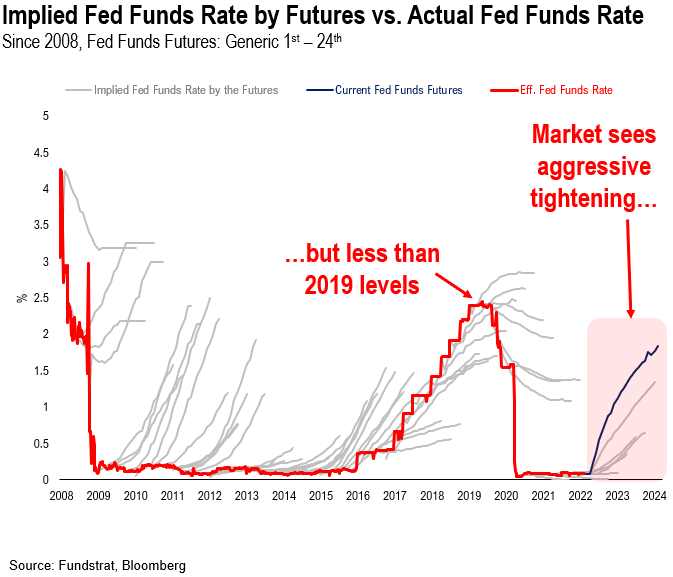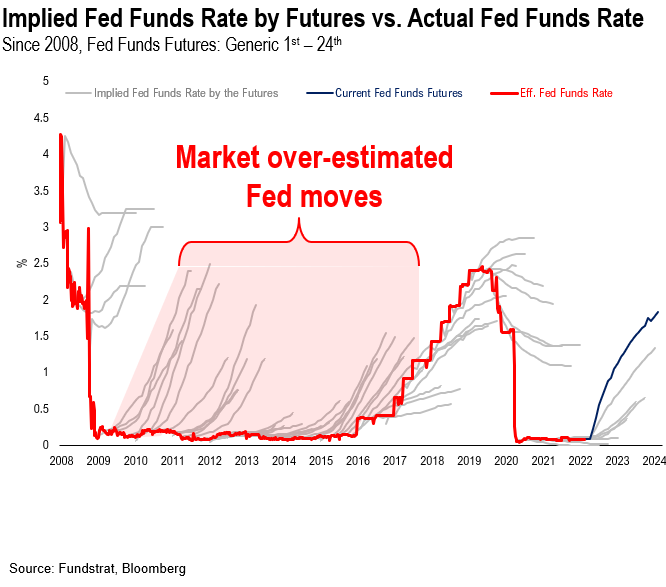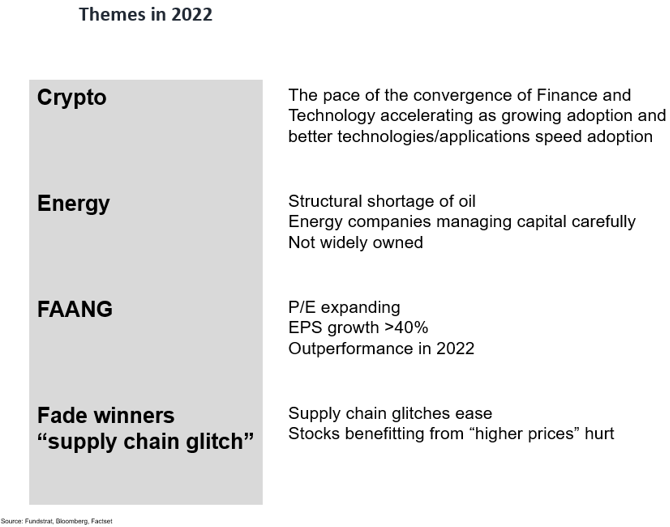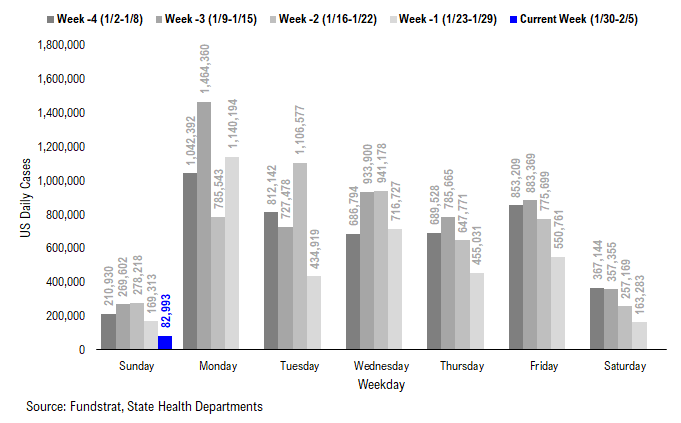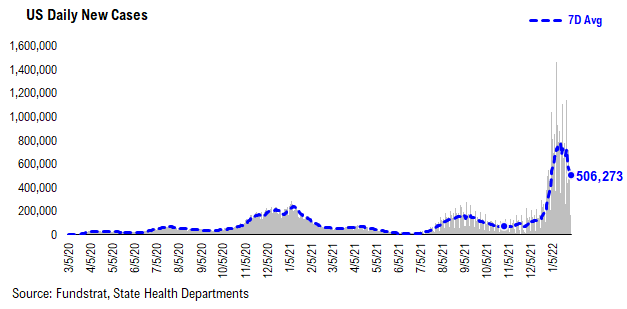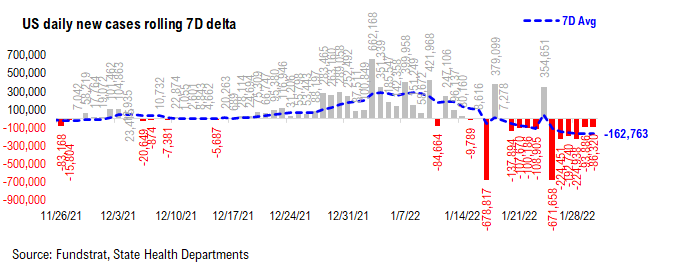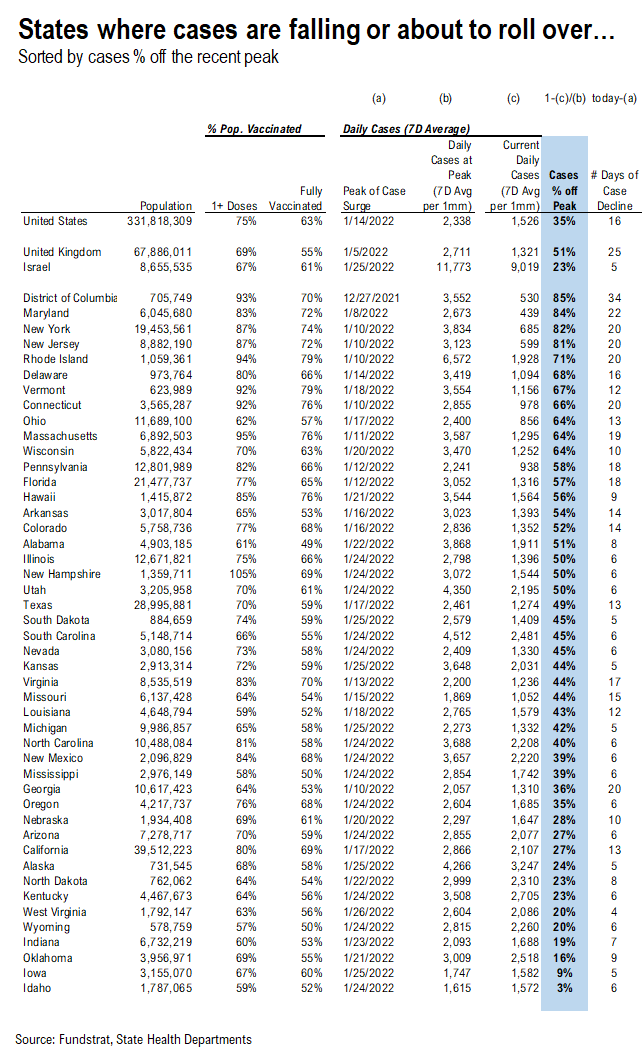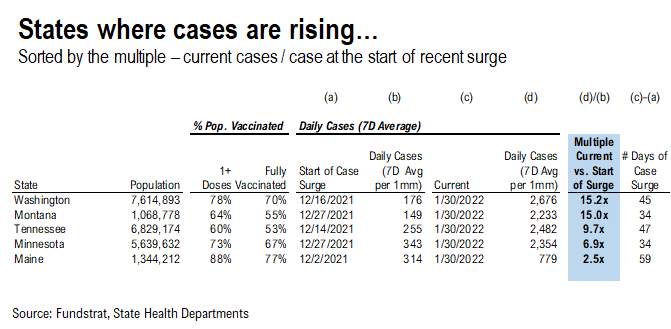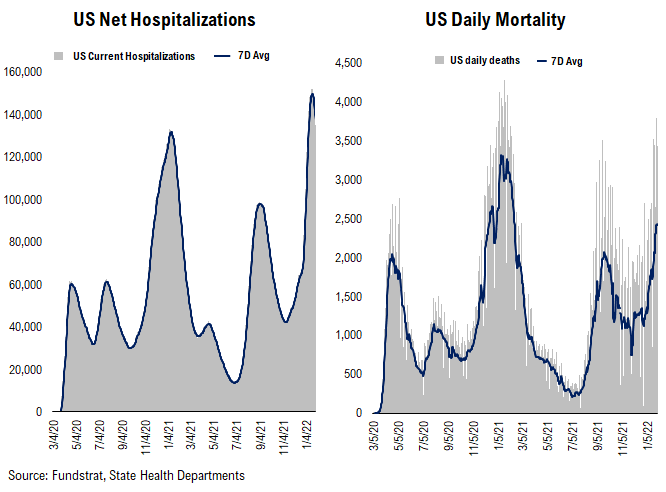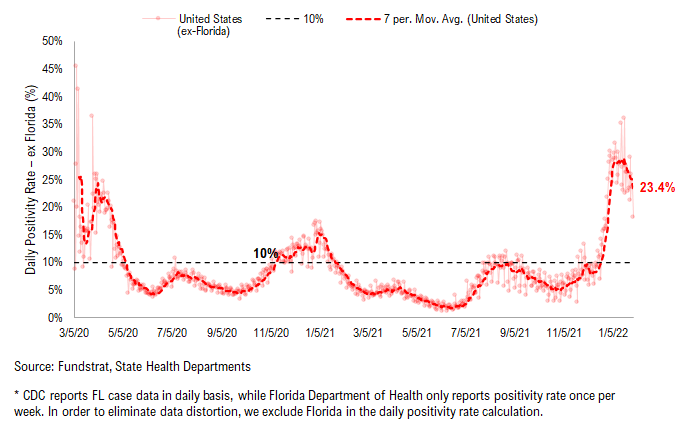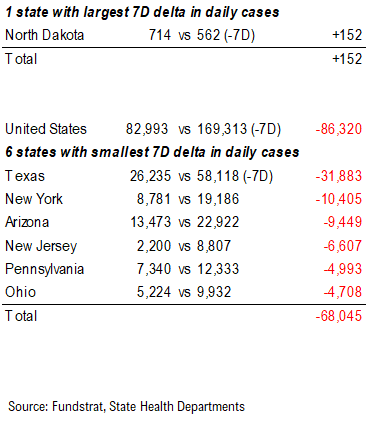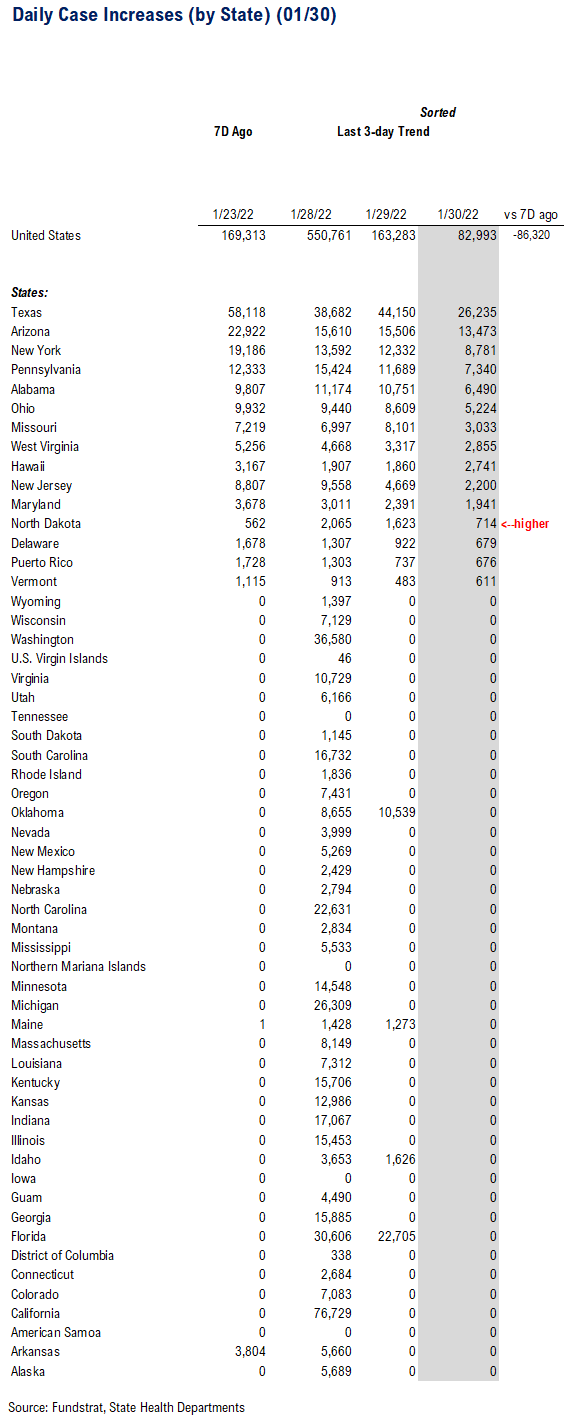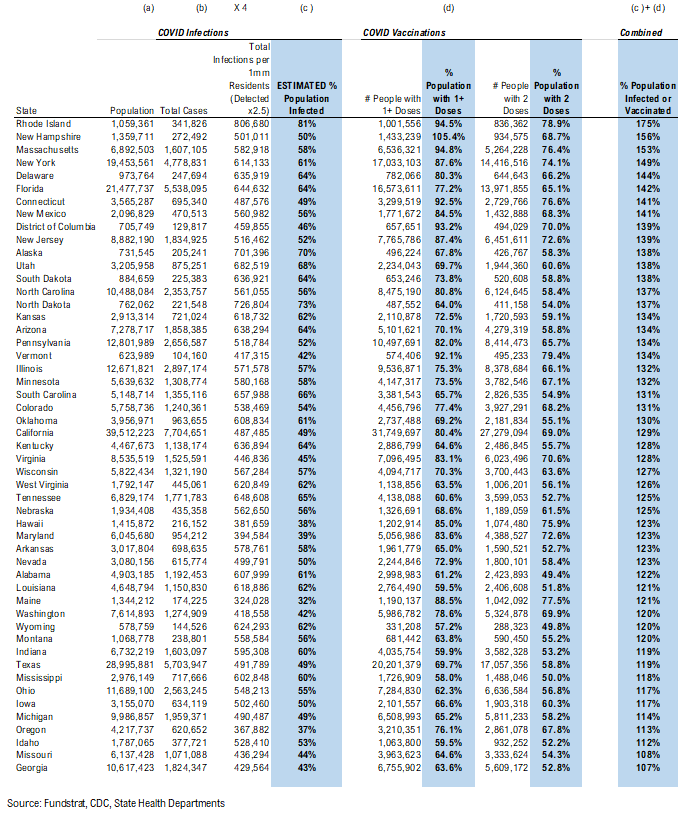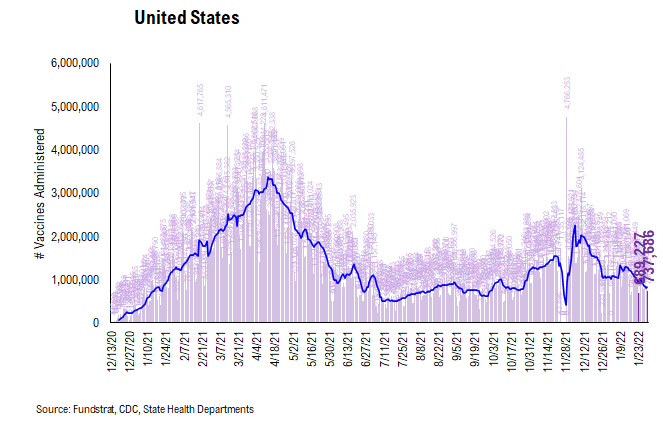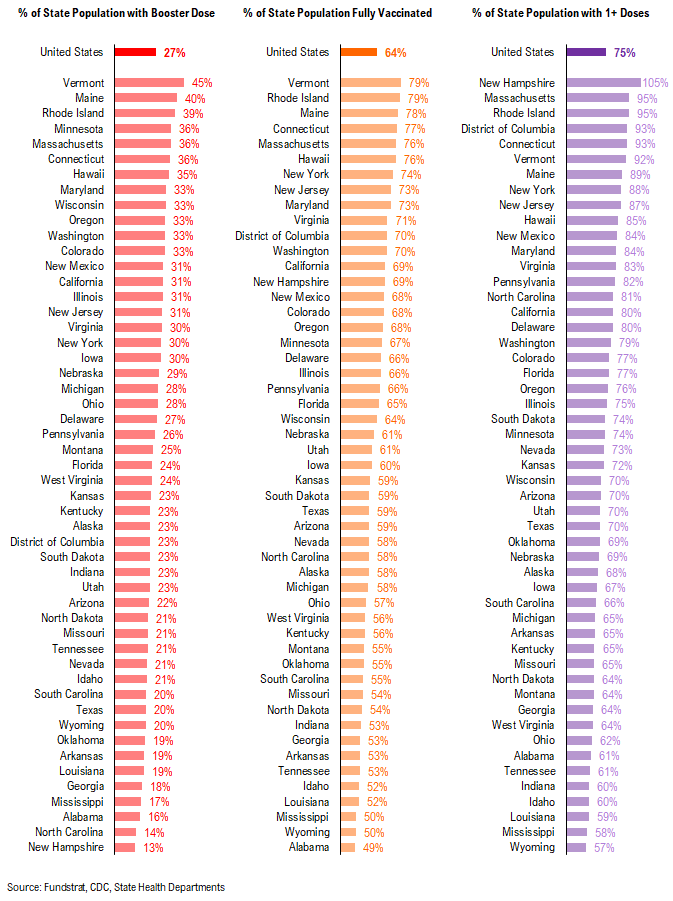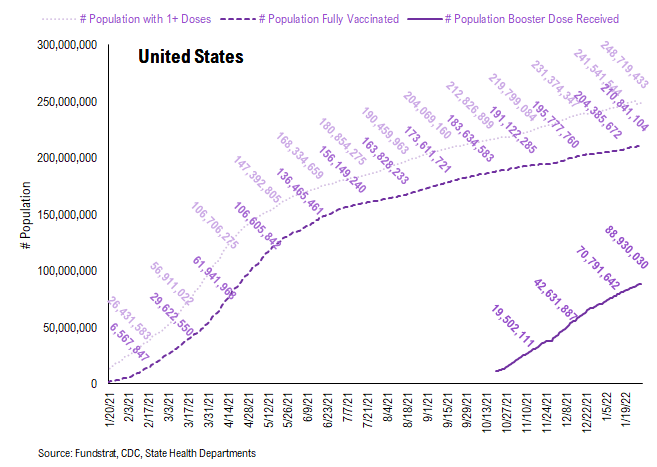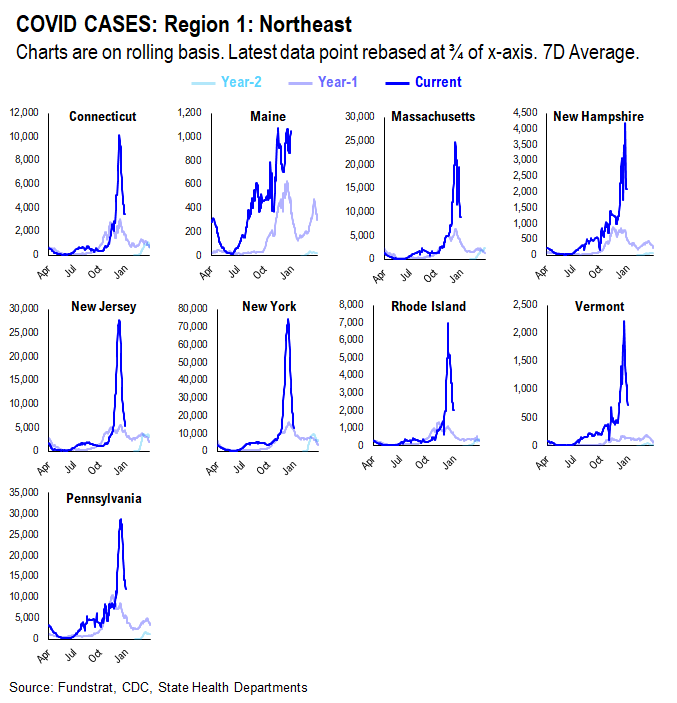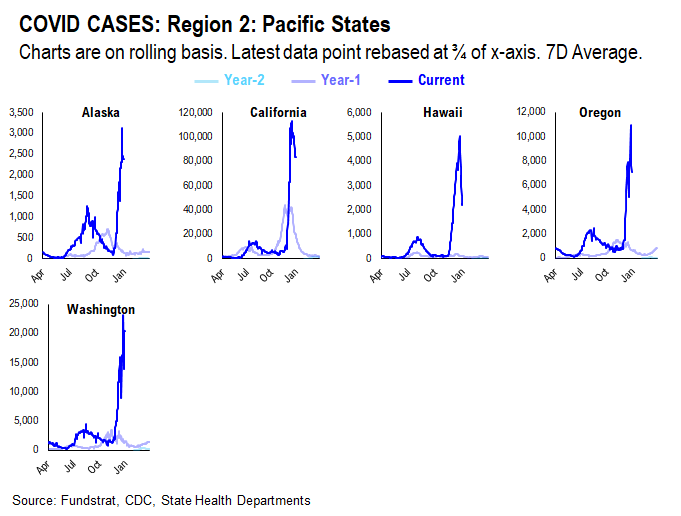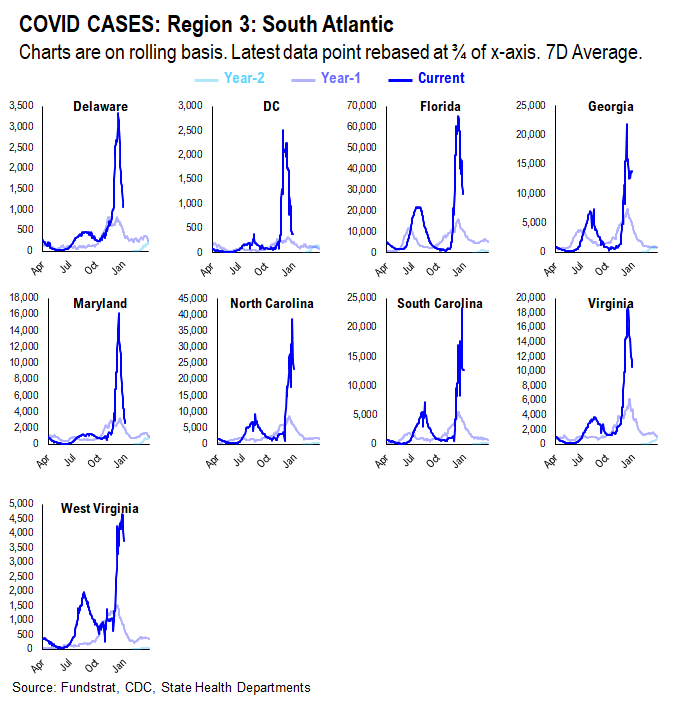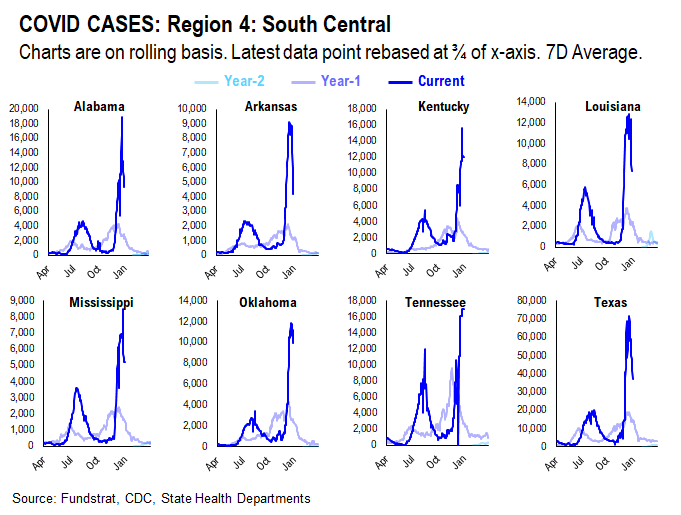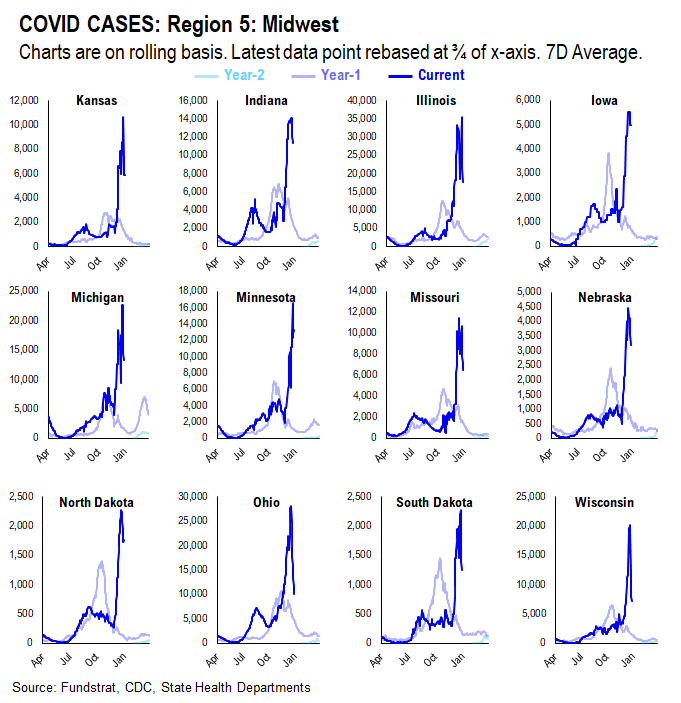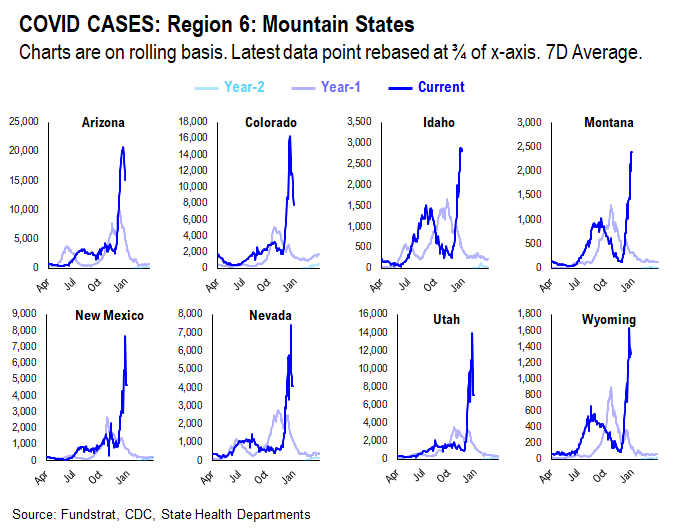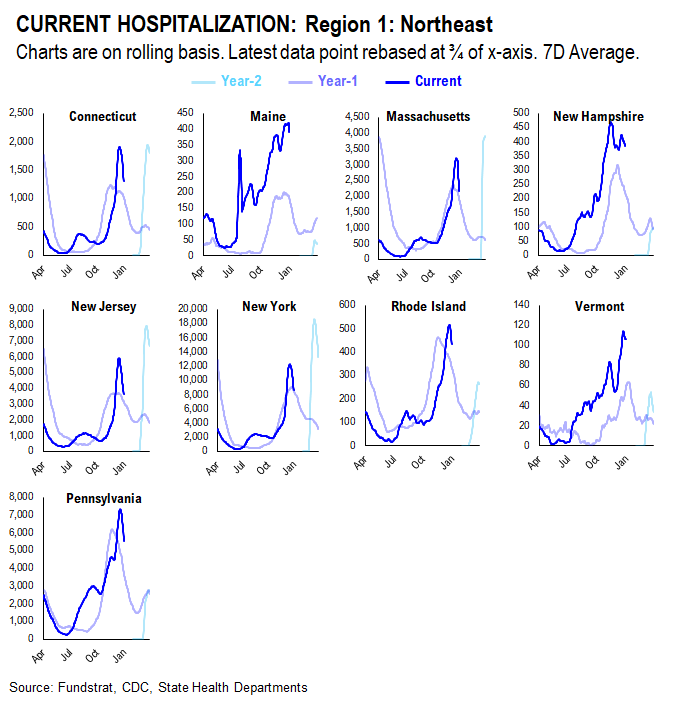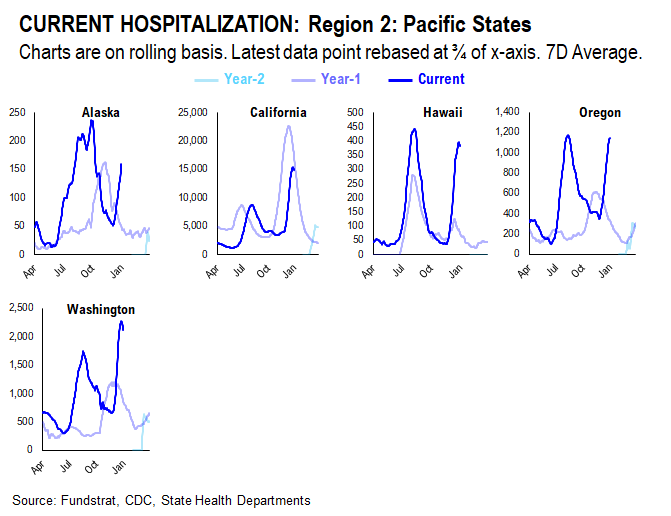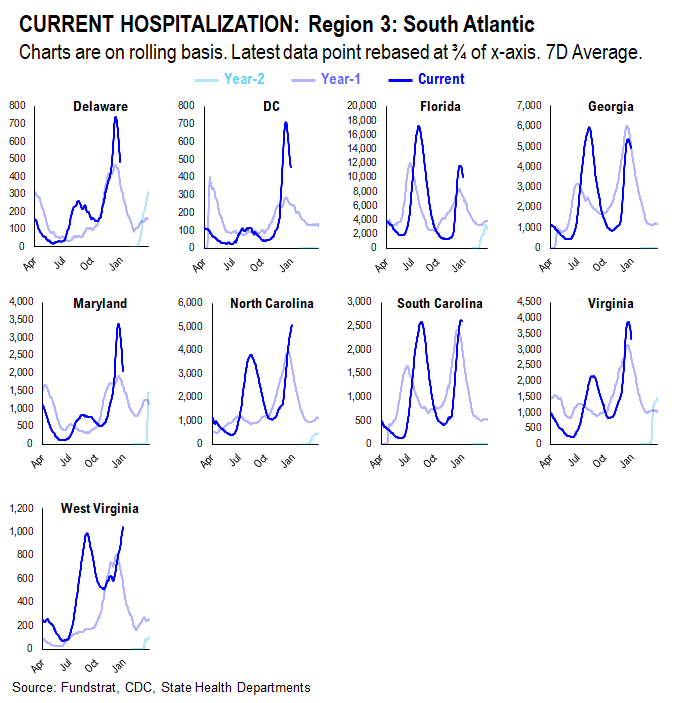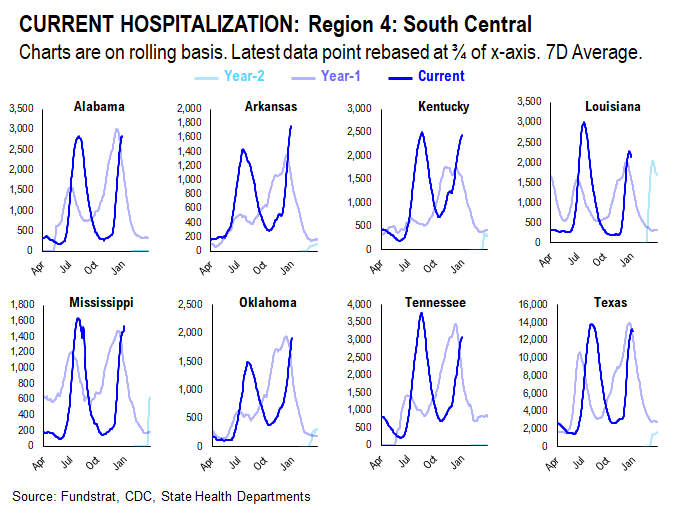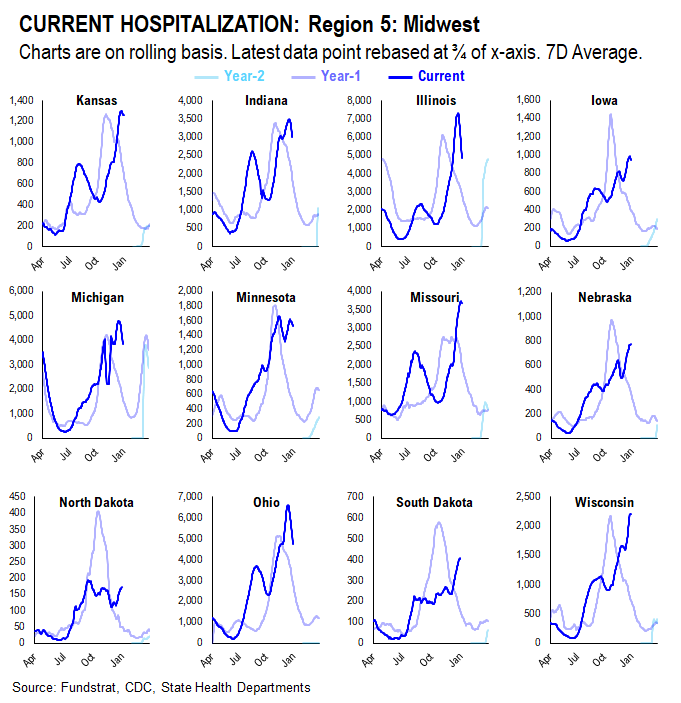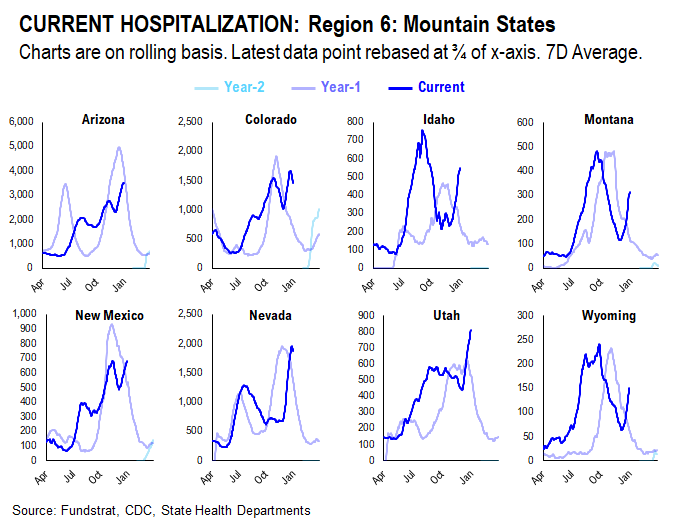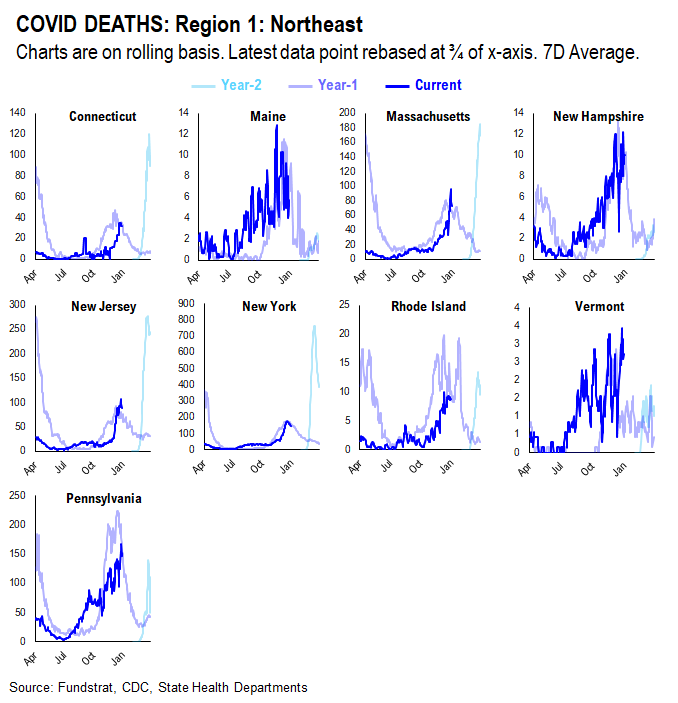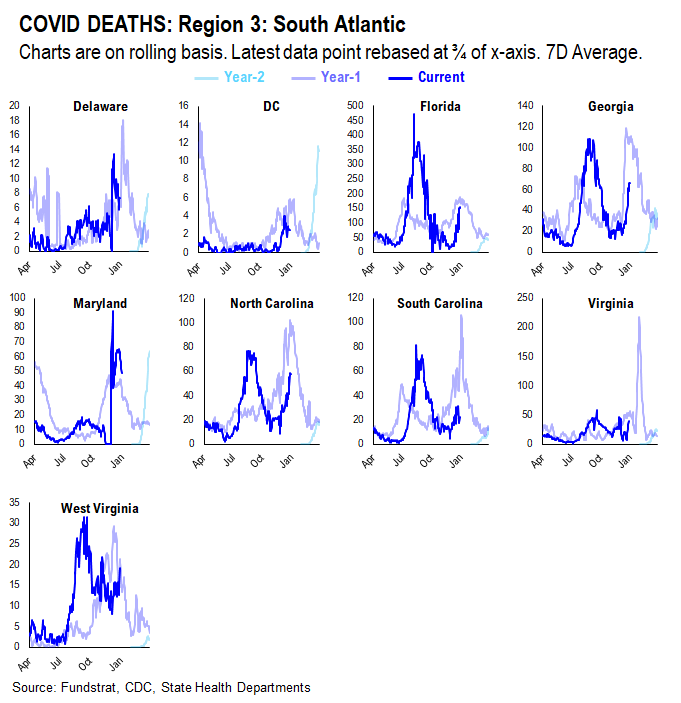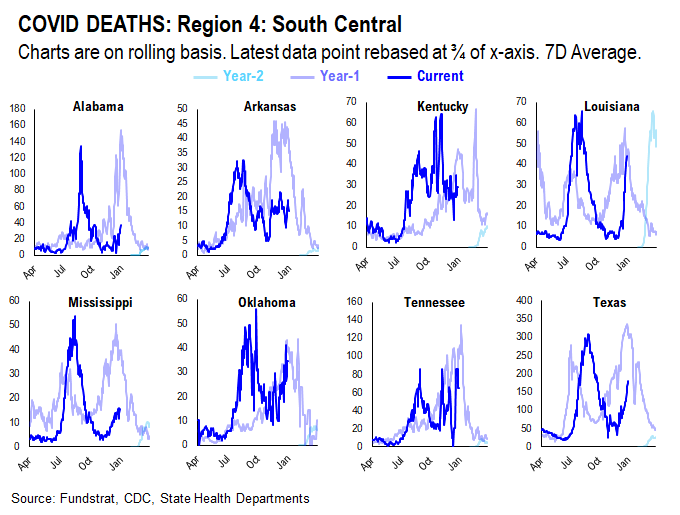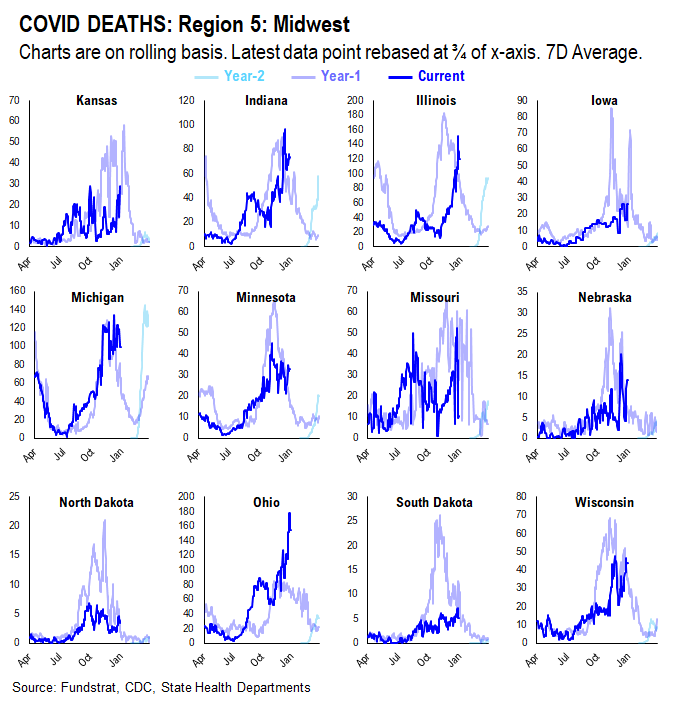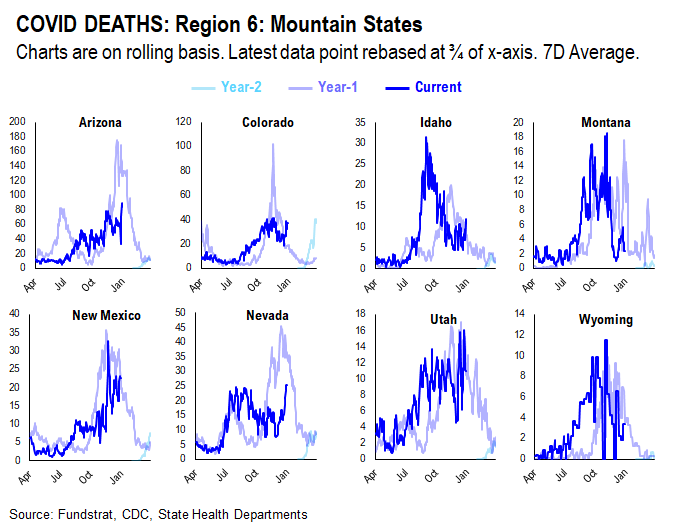Click HERE to access the FSInsight COVID-19 Daily Chartbook.
We publish on a 4-day a week schedule:
Monday
Tuesday
Wednesday
SKIP THURSDAY
Friday
STRATEGY: Biggest lesson of Jan 2022 is market fearful of Fed
5 days until the 2022 Winter Olympics in Beijing
The 2022 Winter starts in 5 days and if there is any place for an “adverse” COVID-19 surprise, it will be China. We are not trying to spread gloom and doom, but rather, want to highlight the risks in the next month:
– China has created a triple zone of protection
– inbound Olympic visitors to China need to fly chartered jets
– already China is seeing cases surge

China has reported a surge in new cases recently. There were 54 cases nationwide and 20 in Beijing:
– plus
– 13 Olympic athletes tested positive upon arrive
– Athletes cannot compete until they have had two consecutive negative tests plus 24 hours
Not surprisingly, there is a considerable amount of stress for the Olympic athletes regarding the COVID-19 protocols. The Rolling Stone article below is a good expose on the anxiety facing athletes. Athletes are terrified of a positive diagnosis:
– article notes there are already 175 cases within the inbound athletes
– pretty high figure

…Is Omicron so contagious, China believes citizens catch it from packages
In a strange set of headlines, China officials are suggesting the first case in Beijing could have been due to a package arriving from Canada with traces of Omicron. I find this interesting for several reasons:
– this is the first time since the start of the pandemic that “packages” are suspected of being the fomite source of transmission
– does this mean Omicron can spread via packages?
– or is this a blame shifting exercise?
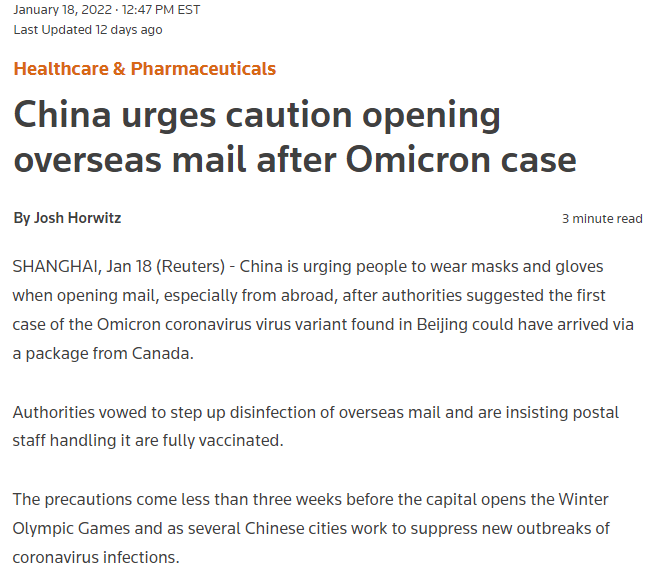
…COVID-19 is rolling over in the US
In the meantime, US is seeing overall cases retreat, which is a good thing. After peaking at nearly 700,000 cases per day, US has seen cases fall 30% to around 500,000 cases per day (7D avg).
These overall figures understate the magnitude of the decline. Take a look at the case trends in the Northeast:
– states like NY, CT, RI, VT, NJ are seeing cases implode
– if this plays out in the rest of the US
– overall USA cases will soon collapse
In fact, there are only 5 states where cases are still rising. And these are highlighted below:
– the states are
– WA, MT, TN, MN and ME
I have no idea why these 5 states are still seeing a rise in cases.
STRATEGY: Lessons from January 2022 –> equity investor confidence become more volatile than credit
The S&P 500 is on track to be down 7% to start 2022. As we look back on the month, equities struggled almost out of the gate and faced relentless selling pressure.
– while we expected 1H2022 to be “treacherous”
– the fierce decline in January caught us off guard
– as we thought it was possible for the S&P 500 to rise to 5,000 before month-end
– but as we advised in December, we thought 1H2022 would be tough to “make money”
And indeed, this has been the case. But the natural question is to ask how the market could turn so suddenly cautious, in a mere handful of trading days. While many factors can be cited, the most commonly cited factor, based on my anecdotal observation, is the Fed tightening. The Fed tightening is a shift in policy compared to the accommodative stance seen since the start of the pandemic.
Our head of data science, tireless Ken, has plotted:
– Fed funds (red line)
– Fed fund futures (forward 24 months, grey line)
And as shown below, the futures market sees aggressive Fed tightening between now and 2024.
– Fed fund futures sees the FF rate at 2% before 2024
– while this seems aggressive
– FF rate was 2.5% prior to the pandemic
– so the rate is still “easy” compared to pre-2020
…In 2010, Fed fund futures 2.5% FF rates by 2012, but it took until 2019…
But the more useful context might be 2010-2016, the post-GFC period. At that time, investors also were calling for the Fed to tighten. And we highlight the Fed fund futures markets:
– as early as 2010
– Fed fund futures saw 2.5% by 2012
– FF would not reach 2.5% until 2019
– that means Fed funds futures market was 7 years too early
The takeaway, in my view, is investors are at risk of “overshooting” the panic around Fed tightening. In fact, in this past week, I had spent the bulk of the week at several conferences. And my takeaway:
– investors are on a buyers strike
– because Fed tightening = don’t be a hero until March
– but the decline in markets is so sharp
– plus collapse of sentiment so great
– we think much of the near term bad news is priced in
– sentiment shows signs of capitulation
– AAII sentiment is the worst since 2013 (See note from last week)
– hence, we see high probability of a violent rally
– taking the S&P 500 to new highs before March
– but this does not mean the “treachery” of 1H2022 is over
STRATEGY: 2022 theme –> BEEF –> Bitcoin (B) + Bitcoin equities (E) + Energy (E) + FAANG (F)
Our 2022 themes are shown below. And in not in any order:
– Bitcoin + Bitcoin Equities BITO GBTC BITW
– Energy
– FAANG FNGS QQQ
Combined, it can be shorted to BEEF.
– Homebuilders (Oct – Apr aka Golden 6 months) XHB
__________________________
30 Granny Shot Ideas: We performed our quarterly rebalance on 10/25. Full stock list here –> Click here
___________________________
POINT 1: Daily COVID-19 cases 82,993, down -86,320 vs 7D ago…
Current Trends — COVID-19 cases:
- Daily cases 82,993 vs 169,313 7D ago, down -86,320
- 7D positivity rate 23.4% vs 26.5% 7D ago
- Hospitalized patients 129,107, down -12% vs 7D ago
- Daily deaths 2416, up 17% vs 7D ago
On Sunday, 14 states + Puerto Rico reported a total of 82,993 new cases, down -86,320 vs. 7D ago. All of them have reported a lower case figure except North Dakota. The 7D delta in daily cases has been negative in 10 of the past 11 days. The chart below shows the steady decline in daily cases over the past 2-3 weeks.
We have updated our state case trend tracker. As shown below, the daily cases have rolled over in almost all US states except 5 states, WA, MT, TN, MN, and ME, where the cases are still rising. Actually, the rise in “reported” cases within the 5 states might also be due to some data distortions – WA and TN have recently changed their reporting schedule, and MN has recently reported lots of backlog cases. Nevertheless, the case rollover in 46 states is already an “enough said.” It shows the COVID cases are in full retreat across the nation. And in fact, DC, MD, NY, and NJ have seen cases fall over 80% from their peaks.
7D delta in daily cases has been negative in 10 of past 11 days…
The 7D delta in daily cases continues to fall. About three weeks ago, the 7D delta was still +300,000 and now it has fallen to -160,000. This reflected the rapid and steady decline in daily cases. And if this trend persists, we could see the daily cases accelerate to the down side.
UPDATED! Only 5 states are still seeing a rise in cases while 45 states + DC are seeing cases falling…
*** We’ve split the “Parabolic Case Tracker” into 2 tables: one where cases are falling (or about to fall), and the other where cases are rising
In these tables, we’ve included the vaccine penetration, case peak information, and the current case trend for 50 US states + DC. The table for states where cases are declining is sorted by case % off of their recent peak, while the table for states where cases are rising is sorted by the current daily cases to pre-surge daily cases multiple.
– The states with higher ranks are the states that have seen a more significant decline / rise in daily cases
– We also calculated the number of days during the recent case surge
– The US as a whole, UK, and Israel are also shown at the top as a reference
Daily deaths are still rising, while positivity rates and hospitalization are falling now…
Below we show the aggregate number of patients hospitalized due to COVID, daily mortality associated with COVID, and the daily positivity rate for COVID
– Net hospitalization started to roll over. And more importantly, the daily mortality did not follow the same pattern as hospitalization, which shows Omicron is less deadly compared to other variants (at least so far).
– Positivity rate finally started to fall after plateauing for two weeks. It also confirms the recent decline in daily cases.
POINT 2: VACCINE: vaccination pace has slowed recently… Still more than half of eligible people have not received their booster shots...
Current Trends — Vaccinations:
– avg 0.8 million this past week vs 1.0 million last week
– overall, 26.8% received booster doses, 63.5% fully vaccinated, 75.0% 1-dose+ received
Vaccination frontier update –> all states now near or above 80% combined penetration (vaccines + infections)
*** We’ve updated the total detected infections multiplier from 4.0x to 2.5x. The CDC changed the estimate multiplier because testing has become much better and more prevalent.
Below we sorted the states by the combined penetration (vaccinations + infections). The assumption is that a state with higher combined penetration is likely to be closer to herd immunity, and therefore, less likely to see a parabolic surge in daily cases and deaths. Please note that this “combined penetration” metric can be over 100%, as infected people could also be vaccinated (actually recommended by CDC).
– Currently, all states are near or above 90% combined penetration
– Given the 2.5x multiplier, all states besides MS, WA, OR, TX, ID, MI, MO, and GA are now above 100% combined penetration (vaccines + infections). Again, this metric can be over 100%, as infected people could also be vaccinated. But 100% combined penetration does not mean that the entire population within each state is either infected or vaccinated
There were a total of 737,686 doses administered, as reported on Sunday. The overall vaccine pace has slowed and the daily number of vaccines administered has been down over the past week. This probably is partially due to the improving COVID case trend. But given the benefits that vaccination provides (reduce severity –> reduce hospitalization –> prevent healthcare crisis), we believe the daily number of vaccines administered remains the most important metric to track. And as we noted previously, there are still half of booster-eligible people (more than 80 million) who have not yet received their booster dose. Hence. to convince these people remains the key.
This is the state by state data below, showing information for individuals with one dose, two doses, and booster dose.
In total, 538 million vaccine doses have been administered across the country. Specifically, 249 million Americans (75% of US population) have received at least 1 dose of the vaccine. 211 million Americans (64% of US population) are fully vaccinated. And 89 million Americans (27% of US population) received their booster shot.
POINT 3: Tracking the seasonality of COVID-19
***We’ve updated the seasonality tracker to show figures from the last 9 months, from this calendar day, in each of the last two years***
As evident by trends in 2020 and 2021, seasonality appears to play an important role in the daily cases, hospitalization, and deaths trends. Therefore, we think there might be a strong argument that COVID-19 is poised to become a seasonal virus.
The possible explanations for the seasonality we observed are:
– Outdoor Temperature: increasing indoor activities in the South vs increasing outdoor activities in the northeast during the Summer
– “Air Conditioning” Season: similar to “outdoor temperature”, more “AC” usage might facilitate the spread of the virus indoors
– Opposite effects hold true in the winter
CASES
It seems as if the main factor contributing to current case trends right now is outdoor temperature. During the Summer, outdoor activities are generally increased in the northern states as the weather becomes nicer. In southern states, on the other hand, it becomes too hot and indoor activities are increased. As such, northern state cases didn’t spike much during Summer 2020 while southern state cases did. Currently, northern state cases are showing a slight spike, especially when compared to Summer 2020. This could be attributed to the introduction of the more transmissible Delta variant and the lifting of restrictions combined with pent up demand for indoor activities.
HOSPITALIZATION
Current hospitalizations appear to be similar or less than Summer 2020 rates in most states. This is likely due to increased vaccination rates and the vaccine’s ability to reduce the severity of the virus.
DEATHS
Current death rates appear to be scattered compared to 2020 rates. This is likely due to varying vaccination rates in each state. States with higher vaccination rates seem to have lower death rates given the vaccine’s ability to reduce the severity of the virus; states with lower vaccination rates seem to have higher death rates.





